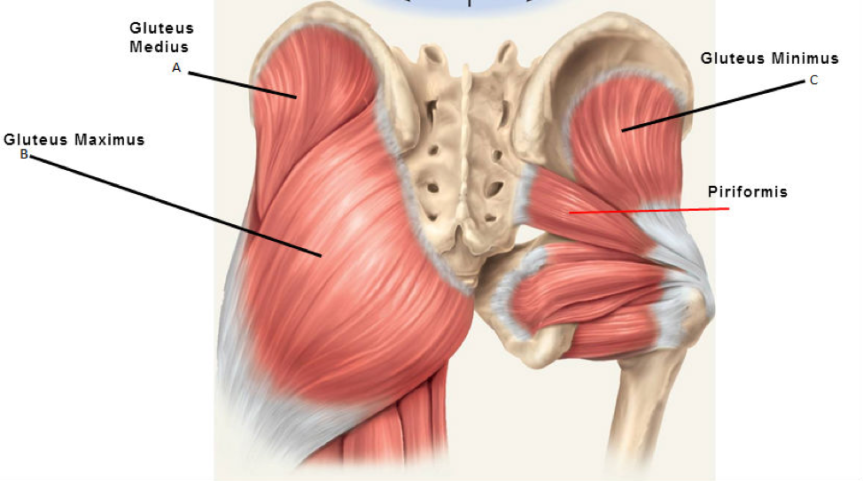
By Marcie Bower, Lic.Ac.
This post is copied from our older, original blog. Original post date 10/25/2014.
The piriformis muscle is a flat, band-like muscle that runs across the buttock and laterally rotates the hip. It runs from the anterior (front) of the sacrum to the head of the femur (the bony notch on the outside of your hip, the top of your upper leg.) The piriformis is a very important muscle clinically because the sciatic nerve runs right alongside the piriformis. In about 15-17% of the population, the sciatic nerve actually runs through the piriformis muscle. This means that stress or injury to the piriformis muscle can irritate the sciatic nerve, and cause sciatica. When the piriformis muscle is the cause of sciatic pain, the condition is called piriformis syndrome.
Symptoms of piriformis syndrome include pain, tingling, or numbness in the buttocks that may extend down the leg. It most commonly occurs in runners or in those who sit for long periods of time, such as those with long commutes or desk jobs.
Piriformis syndrome is something that we treat frequently in our wellness center. Acupuncture and therapeutic massage can both be useful therapies in treating the symptoms of piriformis syndrome and helping to loosen the muscle to prevent future episodes. Therapeutic massage treatment for piriformis tightness/pain or piriformis syndrome combines numerous techniques such as myofascial release, deep tissue, and sports massage to reduce tension and pain, release muscle knots and adhesions, and promote healthy firing of the muscles of the lateral hip. Acupuncture treatment for piriformis syndrome usually includes needling both the local area of pain (such as acupuncture points that lie near the piriformis muscle attachment sites and the motor point of the muscle itself), as well as points on the leg that correspond to the acupuncture channel and connective tissue planes that run through the piriformis muscle. Depending on the style of acupuncture, your acupuncturist may also include points on the hands, wrists, or ears that correspond to the buttock area.
Acupuncture can help alleviate muscle tightness and assist in re-establishing the neuromuscular communication pathways that lead to healthy soft tissue. It has also been shown to reduce pain, numbness, and tingling from nerve impingement, such as sciatica.
Pain in the butt? Give acupuncture & massage a try.

